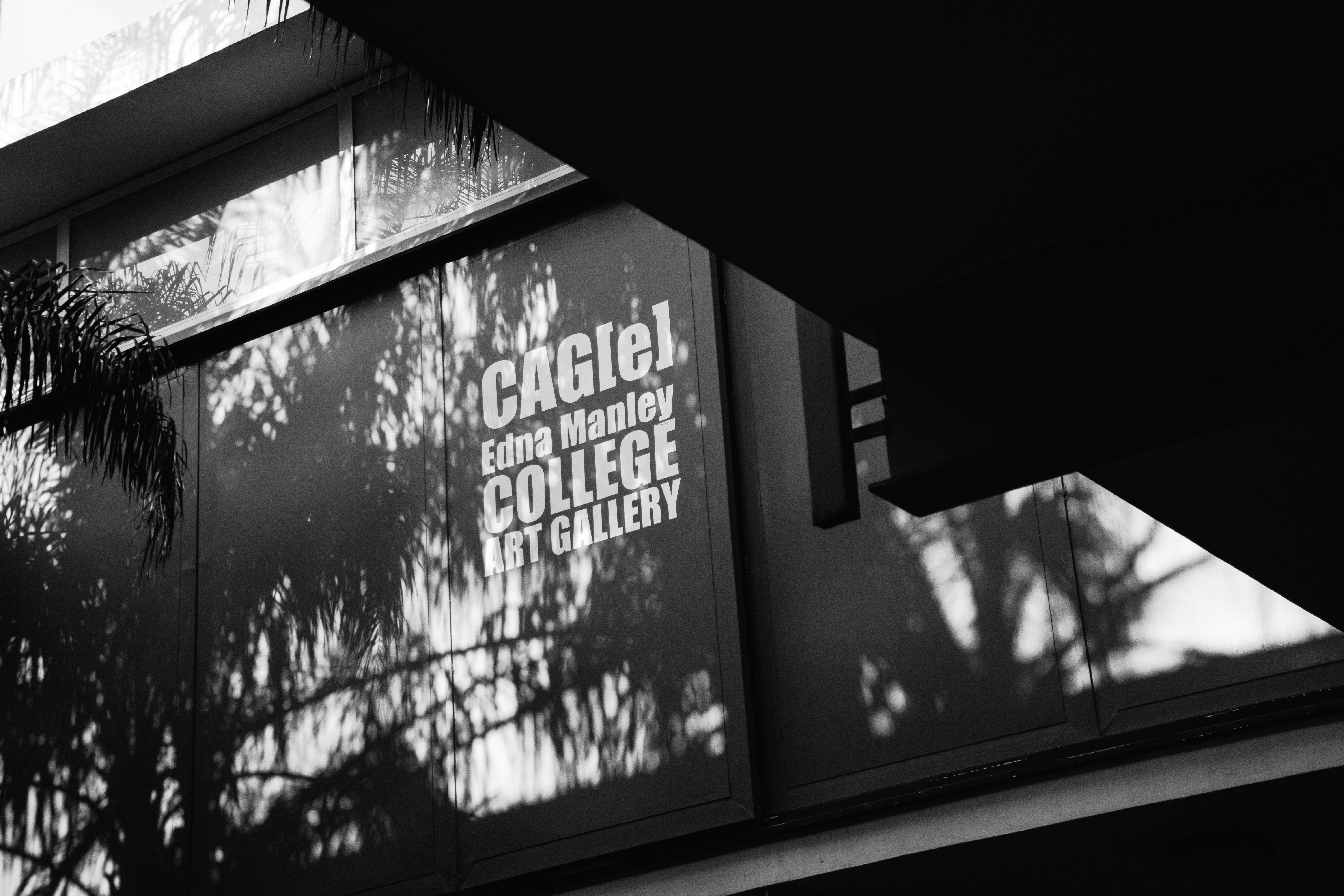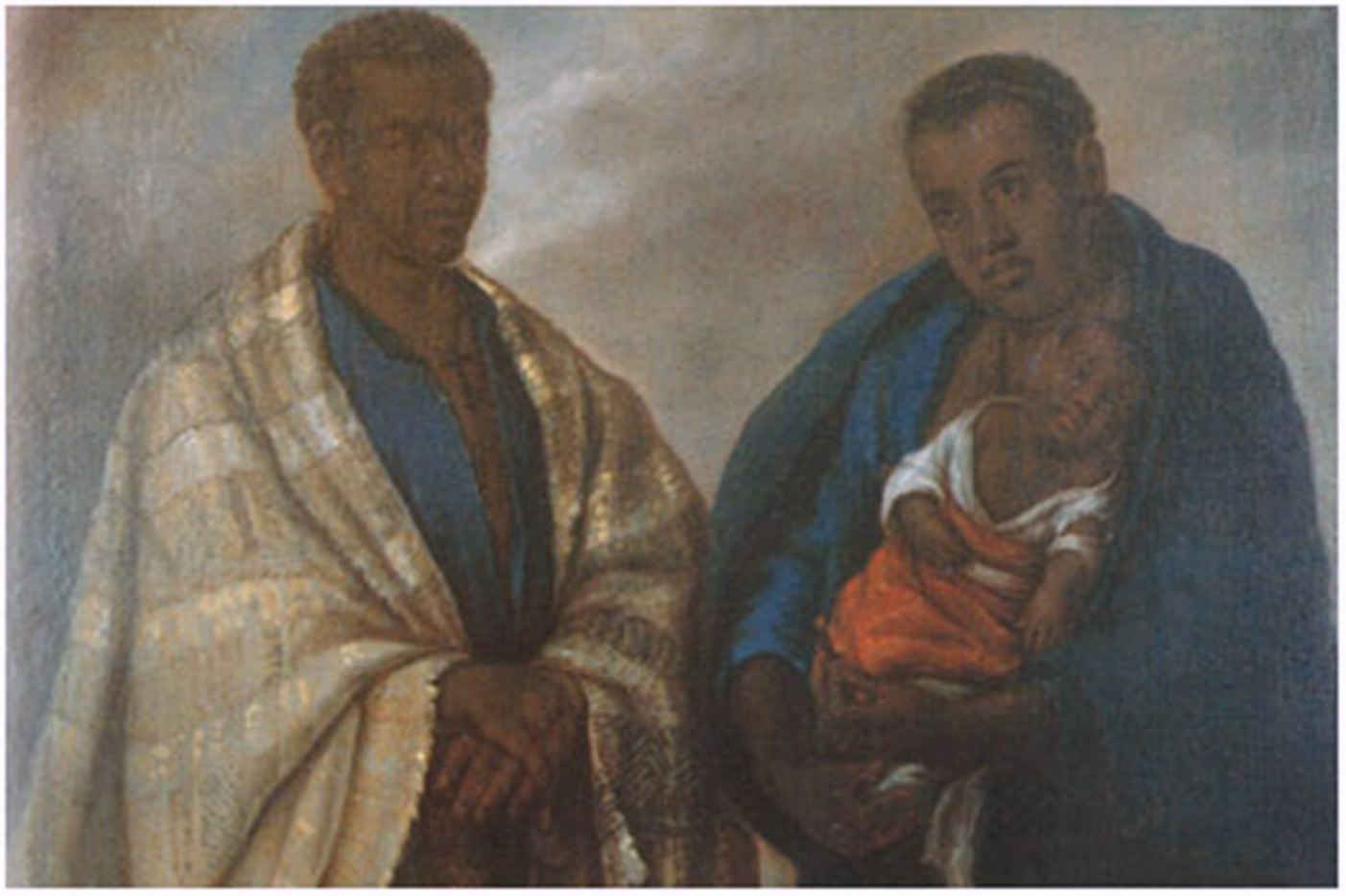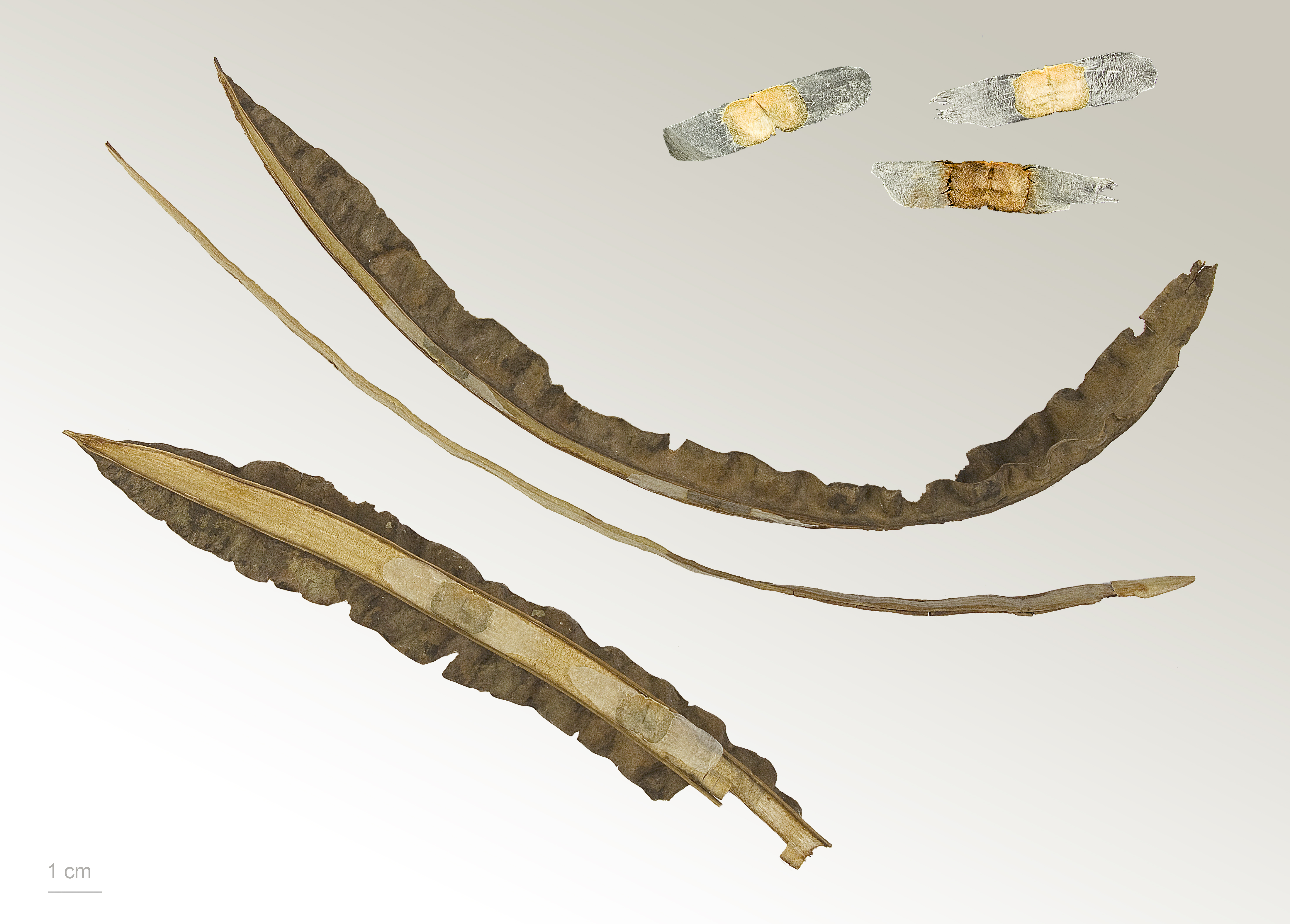|
Edna Manley
Edna Swithenbank Manley, Jamaican Order of Merit, OM (28 February 1900 – 2 February 1987) is considered one of the most important artists and arts educators in Jamaica. She was known primarily as a sculptor although her oeuvre included significant drawings and paintings. Her work forms an important part of the National Gallery of Jamaica's permanent collection and can be viewed in other public institutions in Jamaica such as Bustamante Children's Hospital, the University of the West Indies, and the Kingston Parish Church. Her early training was in the British neoclassical tradition. In the early 1920s and 1930s she experimented with modernism eventually adapting it to her own aesthetic. Edna Manley was an early supporter of art education in Jamaica. In the 1940s, she organised and taught art classes at the Junior Centre of the Institute of Jamaica. These classes developed in a more formal setting with the establishment of the Jamaica School of Art and Craft in 1950. Jamaica ... [...More Info...] [...Related Items...] OR: [Wikipedia] [Google] [Baidu] |
The Most Honourable
The honorific prefix "The Most Honourable" is a form of address that is used in several countries. In the United Kingdom, it precedes the name of a marquess or marchioness. Overview In Jamaica, Governors-General of Jamaica, as well as their spouses, are entitled to be styled "The Most Honourable" upon receipt of the Jamaican Order of the Nation."National Awards of Jamaica" Jamaica Information Service, accessed May 12, 2015. Prime Ministers of Jamaica, and their spouses, are also styled this way upon receipt of the Order of the Nation, which is only given to Jamaican Governors-General and Prime Ministers. In |
Neoclassicism
Neoclassicism (also spelled Neo-classicism) was a Western cultural movement in the decorative and visual arts, literature, theatre, music, and architecture that drew inspiration from the art and culture of classical antiquity. Neoclassicism was born in Rome largely thanks to the writings of Johann Joachim Winckelmann, at the time of the rediscovery of Pompeii and Herculaneum, but its popularity spread all over Europe as a generation of European art students finished their Grand Tour and returned from Italy to their home countries with newly rediscovered Greco-Roman ideals. The main Neoclassical movement coincided with the 18th-century Age of Enlightenment, and continued into the early 19th century, laterally competing with Romanticism. In architecture, the style continued throughout the 19th, 20th and up to the 21st century. European Neoclassicism in the visual arts began c. 1760 in opposition to the then-dominant Rococo style. Rococo architecture emphasizes grace, ornamentati ... [...More Info...] [...Related Items...] OR: [Wikipedia] [Google] [Baidu] |
Jamaica School Of Art And Crafts
Edna Manley College of the Visual and Performing Arts, formerly Jamaica School of Art and Crafts, is an art school in Kingston, Jamaica. In 1940, Edna Manley pioneered evening art classes at the Institute of Jamaica's Junior Centre but it was not until 1950 that the first formal arts school opened at the DaCosta Institute at 1 Central Avenue, Kingston Gardens. A number of leading Jamaican artists collaborated with Manley to open the first art school in Jamaica, including Albert Huie who became one of the tutors.Albert Huie , accessed by Answers.com 64 paying students enrolled in the first year and due to unexpected interest expanded the school at 11 North Street. [...More Info...] [...Related Items...] OR: [Wikipedia] [Google] [Baidu] |
The Prophet 1935
''The'' () is a grammatical article in English, denoting persons or things that are already or about to be mentioned, under discussion, implied or otherwise presumed familiar to listeners, readers, or speakers. It is the definite article in English. ''The'' is the most frequently used word in the English language; studies and analyses of texts have found it to account for seven percent of all printed English-language words. It is derived from gendered articles in Old English which combined in Middle English and now has a single form used with nouns of any gender. The word can be used with both singular and plural nouns, and with a noun that starts with any letter. This is different from many other languages, which have different forms of the definite article for different genders or numbers. Pronunciation In most dialects, "the" is pronounced as (with the voiced dental fricative followed by a schwa) when followed by a consonant sound, and as (homophone of the archaic pron ... [...More Info...] [...Related Items...] OR: [Wikipedia] [Google] [Baidu] |
Edna Manley College Of Visual And Performing Arts
Edna Manley College of the Visual and Performing Arts, formerly Jamaica School of Art and Crafts, is an art school in Kingston, Jamaica. In 1940, Edna Manley pioneered evening art classes at the Institute of Jamaica's Junior Centre but it was not until 1950 that the first formal arts school opened at the DaCosta Institute at 1 Central Avenue, Kingston Gardens. A number of leading Jamaican artists collaborated with Manley to open the first art school in Jamaica, including Albert Huie who became one of the tutors.Albert Huie , accessed by Answers.com 64 paying students enrolled in the first year and due to unexpected interest expanded the school at 11 North Street. [...More Info...] [...Related Items...] OR: [Wikipedia] [Google] [Baidu] |
Jamaica School Of Art
Edna Manley College of the Visual and Performing Arts, formerly Jamaica School of Art and Crafts, is an art school in Kingston, Jamaica. In 1940, Edna Manley pioneered evening art classes at the Institute of Jamaica's Junior Centre but it was not until 1950 that the first formal arts school opened at the DaCosta Institute at 1 Central Avenue, Kingston Gardens. A number of leading Jamaican artists collaborated with Manley to open the first art school in Jamaica, including Albert Huie who became one of the tutors.Albert Huie , accessed by Answers.com 64 paying students enrolled in the first year and due to unexpected interest expanded the school at 11 North Street. [...More Info...] [...Related Items...] OR: [Wikipedia] [Google] [Baidu] |
African Diaspora
The African diaspora is the worldwide collection of communities descended from native Africans or people from Africa, predominantly in the Americas. The term most commonly refers to the descendants of the West and Central Africans who were enslaved and shipped to the Americas via the Atlantic slave trade between the 16th and 19th centuries, with their largest populations in the United States, Brazil and Haiti. However, the term can also be used to refer to the descendants of North Africans who immigrated to other parts of the world. Some scholars identify "four circulatory phases" of this migration out of Africa. The phrase ''African diaspora'' gradually entered common usage at the turn of the 21st century. The term ''diaspora'' originates from the Greek (''diaspora'', literally "scattering") which gained popularity in English in reference to the Jewish diaspora before being more broadly applied to other populations. Less commonly, the term has been used in scholarship to r ... [...More Info...] [...Related Items...] OR: [Wikipedia] [Google] [Baidu] |
Cubist
Cubism is an early-20th-century avant-garde art movement that revolutionized European painting and sculpture, and inspired related movements in music, literature and architecture. In Cubist artwork, objects are analyzed, broken up and reassembled in an abstracted form—instead of depicting objects from a single viewpoint, the artist depicts the subject from a multitude of viewpoints to represent the subject in a greater context. Cubism has been considered the most influential art movement of the 20th century. The term is broadly used in association with a wide variety of art produced in Paris (Montmartre and Montparnasse) or near Paris ( Puteaux) during the 1910s and throughout the 1920s. The movement was pioneered by Pablo Picasso and Georges Braque, and joined by Jean Metzinger, Albert Gleizes, Robert Delaunay, Henri Le Fauconnier, Juan Gris, and Fernand Léger. One primary influence that led to Cubism was the representation of three-dimensional form in the late works of Pau ... [...More Info...] [...Related Items...] OR: [Wikipedia] [Google] [Baidu] |
Tabebuia Donnell-smithii
''Tabebuia'' is a genus of flowering plants in the family Bignoniaceae.Eberhard Fischer, Inge Theisen, and Lúcia G. Lohmann. 2004. "Bignoniaceae". pages 9-38. In: Klaus Kubitzki (editor) and Joachim W. Kadereit (volume editor). ''The Families and Genera of Vascular Plants'' volume VII. Springer-Verlag: Berlin; Heidelberg, Germany. The common name "roble" is sometimes found in English. ''Tabebuias'' have been called "trumpet trees", but this name is usually applied to other trees and has become a source of confusion and misidentification. ''Tabebuia'' consists almost entirely of trees, but a few are often large shrubs. A few species produce timber, but the genus is mostly known for those that are cultivated as flowering trees.David J. Mabberley. 2008. ''Mabberley's Plant-Book'' third edition (2008). Cambridge University Press: UK. ''Tabebuia'' is native to the American tropics and subtropics from Mexico and the Caribbean to Argentina. Most of the species are from Cuba and Hi ... [...More Info...] [...Related Items...] OR: [Wikipedia] [Google] [Baidu] |
Juniper Cedar
''Juniperus virginiana'', also known as red cedar, eastern red cedar, Virginian juniper, eastern juniper, red juniper, and other local names, is a species of juniper native to eastern North America from southeastern Canada to the Gulf of Mexico and east of the Great Plains. Further west it is replaced by the related ''Juniperus scopulorum'' (Rocky Mountain juniper) and to the southwest by ''Juniperus ashei'' (Ashe juniper).Farjon, A. (2005). ''Monograph of Cupressaceae and Sciadopitys''. Royal Botanic Gardens, Kew. Adams, R. P. (2004). ''Junipers of the World''. Trafford. Description ''Juniperus virginiana'' is a dense slow-growing coniferous evergreen tree that may never become more than a bush on poor soil, but is ordinarily from tall, with a short trunk in diameter, rarely to in height and in diameter. The oldest tree reported, from West Virginia, was 940 years old. The bark is reddish-brown, fibrous, and peels off in narrow strips. The leaves are of two types; sharp, ... [...More Info...] [...Related Items...] OR: [Wikipedia] [Google] [Baidu] |
Mahogany
Mahogany is a straight-grained, reddish-brown timber of three tropical hardwood species of the genus ''Swietenia'', indigenous to the AmericasBridgewater, Samuel (2012). ''A Natural History of Belize: Inside the Maya Forest''. Austin: University of Texas Press. pp. 164–165. . and part of the pantropical chinaberry family, Meliaceae. Mahogany is used commercially for a wide variety of goods, due to its coloring and durable nature. It is naturally found within the Americas, but has also been imported to plantations across Asia and Oceania. The mahogany trade may have begun as early as the 16th century and flourished in the 17th and 18th centuries. In certain countries, mahogany is considered an invasive species. Description The three species are: *Honduran or big-leaf mahogany ('' Swietenia macrophylla''), with a range from Mexico to southern Amazonia in Brazil, the most widespread species of mahogany and the only genuine mahogany species commercially grown today. Illegal l ... [...More Info...] [...Related Items...] OR: [Wikipedia] [Google] [Baidu] |
Xanthorrhoea
''Xanthorrhoea'' () is a genus of about 30 species of flowering plants endemic to Australia. Species are known by the name grass tree. Description All are perennials and have a secondary thickening meristem in the stem. Many, but not all, species develop an above ground stem. The stem may take up to twenty years to emerge. Plants begin as a crown of rigid grass-like leaves, the caudex slowly growing beneath. The main stem or branches continue to develop beneath the crown, This is rough-surfaced, built from accumulated leaf-bases around the secondarily thickened trunk. The trunk is sometimes unbranched, some species will branch if the growing point is damaged, and others naturally grow numerous branches. Flowers are borne on a long spike above a bare section called a scape; the total length can be over three four metres long in some species. Flowering occurs in a distinct flowering period, which varies for each species, and often stimulated by bushfire. Fires will burn the le ... [...More Info...] [...Related Items...] OR: [Wikipedia] [Google] [Baidu] |
.jpg)


.png)




.jpg)
